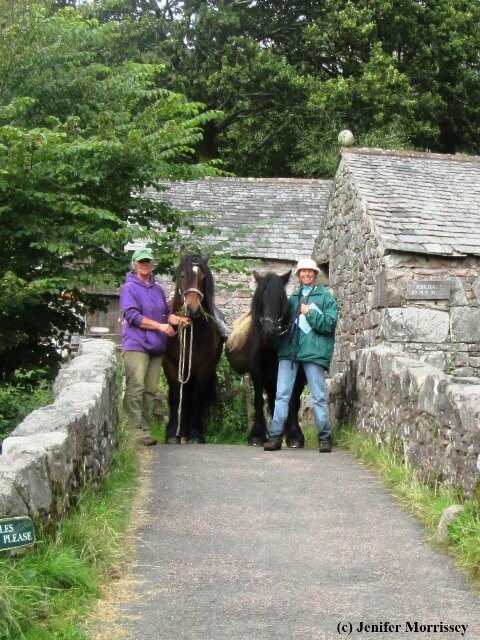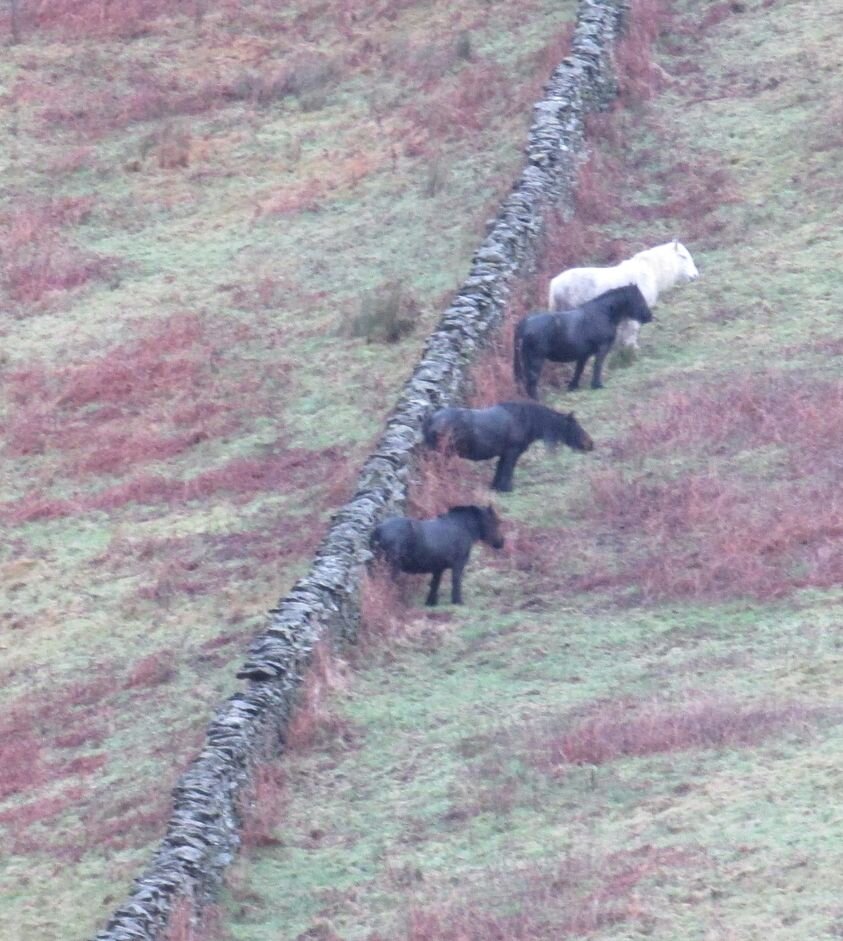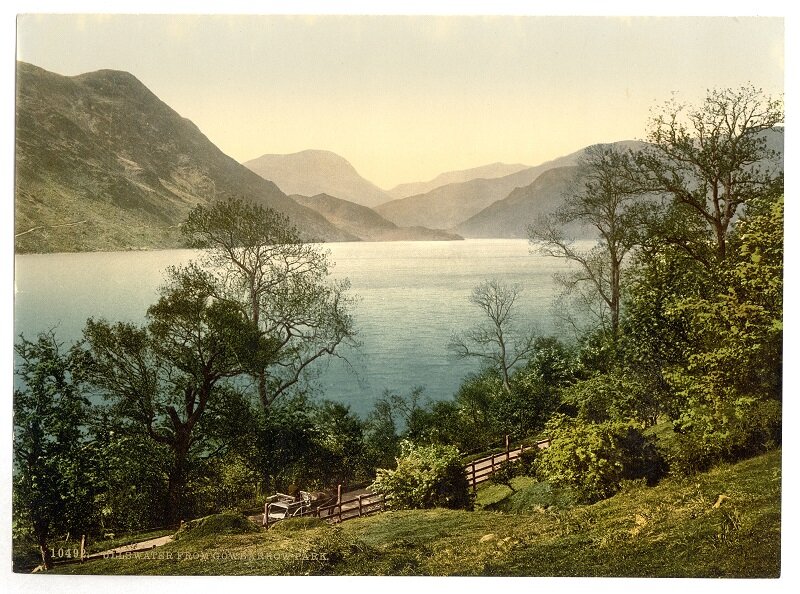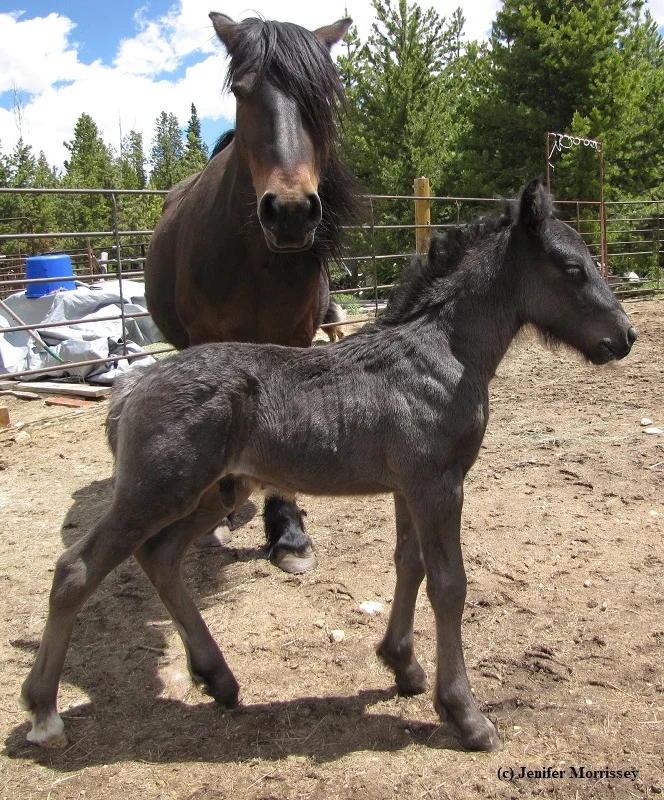The Sands
/Living as I do in the middle of the North American continent, over a thousand miles from an ocean shore, it is unlikely I’ll ever ride any of my Fell Ponies on a beach. As a child growing up in Oregon, though, I was fortunate to spend many formative years at the coast where I became intimately aware of tides and waves and sand. When my sister visited me one summer recently, we talked of a beach ride we’d taken at the Oregon Coast many years before when my parents gave into repeated requests for an equine experience. That we both have strong memories of that ride is perhaps evidence that there is something potent about being on equines on sands.
My stewardship of Fell Ponies has led me to a curiosity about packhorse bridges in Cumbria. It is thought that Fell Ponies were used during the time of the packhorse trade to carry goods throughout England, mostly from the Lake District outward. From a study of packhorse bridges I became curious about packhorse routes and subsequently learned about the Sands routes. My childhood experiences at the Oregon Coast caused me to be fascinated and needing to learn more.
Major towns, highways, and sands areas in MoreCambe Bay at the southern tip of Cumbria. One route across the sands went from either Hest Bank or SilverDale to Kents Bank. Others crossed the Cartmel and Duddon Sands.
Fortunately for me, the long-time Queen’s Guide to the Sands, Cedric Robinson, has written a number of books about his experience on the Sands of Morecambe Bay. His stories of this estuary took me back to my time on the Nestucca estuary in Oregon, digging for clams, avoiding quicksand, timing outings relative to the tides, and marveling at phosphorescence.
Estuaries are the tidal area of a river where it meets the sea. The Nestucca estuary of my childhood received both the Little Nestucca and mainstem rivers. Morecambe Bay at the southern edge of Cumbria is fascinating because it receives seven rivers: Kent, Keer, Leven, Crake, Bela, Winster, and Lune. Robinson’s experiences have primarily been in the portion of the Bay where the Kent and Keer enter: first as a fisherman and then as a Guide most often leading walks from Silverdale or Hest Bank to Kents Bank. The map here shows two other Sands areas to the west of the Kent: the Cartmel (also in Morecambe Bay) and the Duddon.
J.D. Marshall in his book Old Lakeland, says about the Cartmel route, “The first recorded crossing was in 1322, but this route was without doubt used in earlier times than that, and continued as the usual route to the area as late as the mid 19th century. It was certainly the shortest route, and usually also the most comfortable, with guides appointed to lead travelers over the safe routes which constantly varied according to the tides and the weather.” (1)
Sign post in Cartmel noting distances over sands routes.
Courtesy and copyright Maggie B. Dickinson
Sands routes were important before the era of railways because transport was accomplished with natural horsepower. At low tide when the Sands are exposed, traversing the Sands could save many miles when traveling from places in the Lake District to markets in Lancashire and points south. The Sands routes were also valued because they were less dusty than heavily traveled roads in the summer time. Guides were necessary who knew the Sands intimately so that travelers wouldn’t become mired in quicksand, would know where to best cross the rivers and would know when was the proper time to set off so as to arrive safely before the tide came back in. Because Morecambe Bay is shallow, the tide recedes nearly nine miles but comes back in quickly when it returns, “with the speed of a good horse.” (2)
A tangential connection of the Sands to Fell Ponies came in 1985. HRH Prince Philip, Duke of Edinburgh, is known to Fell Pony enthusiasts for his driving of HM the Queen’s Fells. In 1985 he drove his Cleveland Bay horses across the Kent sands, guided by Robinson, and accompanied by other carriage drivers. The day before the Royal crossing, the Kent channel moved two miles, revealing why the Queen’s Guide to the Sands is necessary and is an official post.
When Robinson started his fisherman’s career on the Sands, he relied on natural horsepower to carry cockles and shrimp and flukes from the Sands back to shore. Here are some of my favorite stories that he shared in his books:
“Many a horse that spent years pulling cabs along Morecambe promenade had a new lease of life on the Sands. A few horses were bought at the old fairs at Brough and Appleby, but you needed to have made every mistake in buying and selling horses to have the confidence to deal in places such as those….” (3)
“When cockling, a fisherman did not need his horse for an hour or two. Jack Manning relates that to avoid having a chilled horse, the fisherman would remove it from the shafts, tip up the cart, having regard to the wind direction and stand the horse where it derived shelter from the weather. The animal was provided with a nose bag containing hay. There might be half a ton of cockles on the cart when it was drawn off the Sands.” (4)
“The Sand horses truly amazed me on how good they were to work with in the dark. A horse new to the Sands would take a little time to get used to following wheel marks made on the outward journey, but an experienced animal was able to follow them even in the dark. You could even sit in the front of the cart with your back to the horse and he would bring you home.” (5)
The stories I could most relate to were about phosphorescence. My siblings and I experienced this on a few occasions on the beach as children, scuffling our feet in the wet sand of low tide after dark and watching sparks fly. Later I experienced phosphorescence when paddling a sea kayak at night in Puget Sound in Washington. Sparks would spread from where the oar entered the water each time I took a stroke. I marveled at phosphorescence at these times, but how an equine might react seems a different matter. Robinson calls phosphorescence ‘foxfire’ and relates these stories:
“Every movement of the horses’ hooves in the water sent up a shower of sparkling drops into the dark night. As the cart in front of me moved out, its wheels threw up a cascade of shining water right in my horse’s path and frightened him so much that I could not control him. He just wanted to get anywhere out of the foxfire and this for me was really frightening. Dad decided to take Banner and I took Daisy, who was a quiet, experienced animal.”
“The foxfire had to be seen to be believed. Even when you had hauled in your net and emptied your catch of shrimps into a box, and were running your fingers through them to sort out the seaweed, you didn’t need a torch because they were all aglow.”
“These sparks flickered around the spokes of the wheels, the hubs and the nets. We could see the whole shape of the nets glowing with phosphorescence…. I have seen it very few times in my life in spite of all my time on the Sands. Shrimping with a horse and cart, and thus activating the water, showed to the full the true brilliance of the foxfire.” (6)
There is one other modern-day connection between the Sands and Fell Ponies. To supplement his meager income as a fisherman and guide to the Sands, Robinson started a pony-ride business. One of the ponies was a Fell. “Bluey was a very nice Fell Pony, which we bought from a dealer at Shap. Horses were being sold abroad at this time for the meat trade, so we actually saved Bluey’s life and he turned out to be a belter!” (7)
Raisburn Lettie and Anna Bigelow on the coast of Maine. Courtesy Katie Liscovitz
Perhaps someday I’ll get to ride a Fell Pony on an ocean beach. And perhaps someday I’ll even get to walk the Sands route with the Queens Guide to the Sands. Even better would be to ride it on a Fell Pony! In the meantime, I’ll view photos of Fell Ponies on beaches - like the one here of Raisburn Lettie with Anna Bigelow - with much deeper appreciation for equines on sands and especially the connection between Fell Ponies and the Sands routes of Cumbria.
Marshall. J. D. Old Lakeland. David & Charles, 1971, per Maggie B. Dickinson email dated 9/23/16.
Robinson, Cedric, and Mitchell, W.R. Life around Morecambe Bay. Clapham via Lancaster, England: Dalesman Books, 1986, p. 7
Robinson and Mitchell, p. 43
Same as #2
Robinson, Cedric. Sandman: The Autobiography of Cedric Robinson, the Queens Guide to the Sands. Great Northern Books, Ltd. Ilkley, England, 2009, p. 48.
Robinson, p. 36
Robinson, p. 130
With thanks to Maggie B. Dickinson for generously sharing her research on packhorse bridges and routes.























































